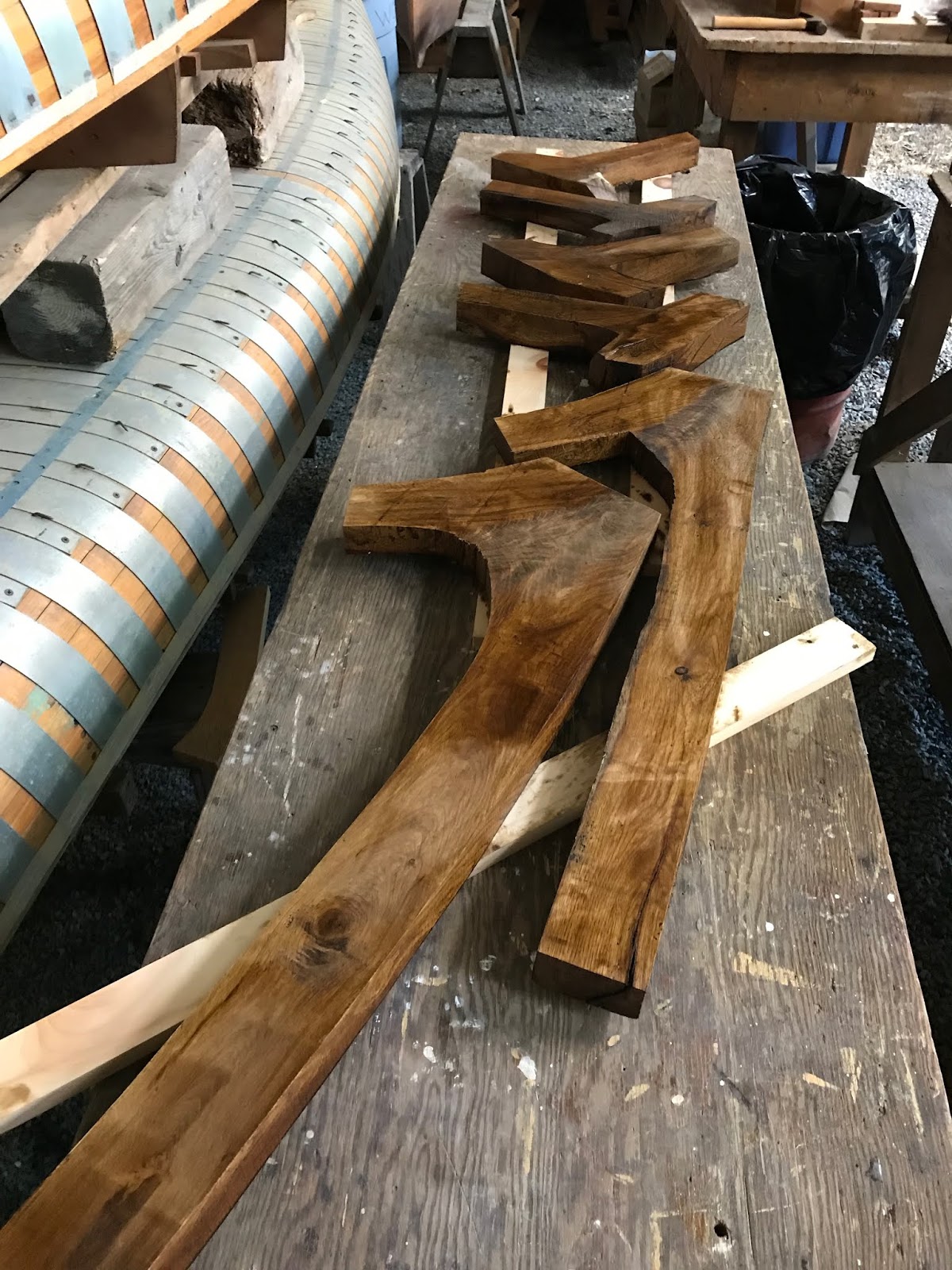A thought that occurred to me the other day: Sometimes you’ll see a tree with a very long limb, growing nearly horizontally. A cantilevered structure like that must have the top portion under considerable tension. Does the wood on the top of such a limb grow in any way differently than the compressive wood at the bottom, or in a vertical trunk? If so, can that be used to good effect in human-made structures using that wood?
perhaps knowing about WholeTrees, a company that makes structural members out of trees (not lumber) might provide some insight.
I won’t link them here but you can look for wholetrees dot com
Chronos - that is an excellent question and took me back to college days of solid mechanics 101. I did some reading and indeed your intuition is correct.
There is Tension Wood and Compression wood and the general term for this is Reaction wood. There are more botanical details and you can read them here : Reaction wood - Wikipedia
Also this got me curious about wind resistance since a lot of structural design governing case turns out to be wind loads. So it seems trees grow different woods for wind resistance too :
“ Cross-sections of tree stems exposed to wind from one direction often are elliptical because more cambial activity occurs on the leeward side. In fact, secondary growth may cease completely on the windward side of the trunk and increase on the leeward side. An extreme illustration is a section of trunk taken from a Monterey cypress that grew on Cypress Point, just north of Carmel Bay in California. It was 74 inches in the diameter that grew parallel to the prevailing wind, but was only 9 inches in the opposite diameter. Only 50 growth rings were formed on the windward side of the section, but the leeward side had 304 rings.”
From : windaffectstrees
Analysis of the structural efficiency of trees
Page 186 goes into some detail about horizontal branches handling the stress loads along with an interesting cross section image of a branch., Shortly after it discusses the reinforcement of the joints where branches connect to the main trunk and each other. Those joints are extremely strong with long dense grain that bifurcates to provide strength both above and below the branch.
AM77494 has it. It’s reaction wood. Reaction wood that grows in the trunk can produce very interesting grain when sawn through and through. Nakashima loved using it for his tables.
But trying to use the branches would be an exercise in frustration as the wood warps every which way. Shipbuilders did use hakmatack knees for naturally formed braces. They form where the roots take off, I think. Not sure if that is reaction wood.
Dennis
These are referred to as grown (as opposed to laminated, “sawn” , or steam bent from straight grained wood) frames or knees. Frames comprise the “ribs” of the ship’s hull. Knees are right(ish) angle brackets that generally go between horizontal (deck or cabin roof beams) and vertical (bulkhead or frame) members. Grown knees were/are fairly common, as only one bend is needed, and most trees have several roots (as mixdenny mentioned) that will provide the right approximate shape. One piece grown frames are fairly rare, as the frames generally needed an S-shaped curve. Even where curved grain was used for frames, it was usually in several pieces, with the splices covered by a sister piece, itself spliced in different places. (double-sawn frames)
The Vikings used the joints where large limbs attached to the trunk in shipbuilding to form ribs with attached cross braces. These were so valuable that they would climb the trees and cut these joints out so they wouldn’t be damaged when the tree was felled.
Modern Primitive woodworkers use the limbs in various ways and I’m sure the Shakers artisans took advantage of the properties of the branch wood.
So according to that Wiki site, gymnosperm reaction wood is the compressive wood at the bottom of the limb. But a straight vertical trunk is also in compression. How is the bottom-of-the-limb wood different from trunk wood?
Reaction wood is a catch-all, as hard woods and soft woods react differently. Hardwood species generally create tension wood on the side under tension (top of branch). Conifers generally create compression wood on the side being compressed (bottom of branch). Compression wood is a lot denser (50%) with more lignin, and less cellulose. Tension wood has less lignin and more cellulose. In the lumber market it’s usually considered a bad thing as it can cause warping when drying.
Are you talking “normal” wood under “normal” compression or, for example, pistol butt trees on unstable slopes? From what I remember, in a normal cell, the cell walls, lignin and microfibrils layers line up and the cell grows fairly uniform. In compression wood the increase in lignin pushes the microfibrils off axis and the cell tends to grow more longitudinally. This creates a larger growth ring on that side and props up that side of the tree.
Chronos, we actively seek out compression wood in bow building. Not easy to find branches straight enough but they are valued when we can. Some species of pine which is not considered bow wood will make very decent bows from straight horizontal branches, more lignin is deposited and it becomes denser and heavier.
